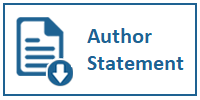Aspect-Based Sentiment Analysis on Application Review using Convolutional Neural Network
(Case Study: PeduliLindungi)
DOI:
https://doi.org/10.31937/si.v13i1.2684Abstract
As an obligatory application during the COVID-19 pandemic by Indonesians, PeduliLindungi must have provided outstanding quality services to its users. However, as of December 2021, users' sentiment toward the quality and service of the PeduliLindungi application was still low, with an application rating of 3.6 out of 5 on the Google Play Store. This study uses text mining techniques for the Aspect-Based Sentiment Analysis (ABSA) task in the PeduliLindungi application review, a sentiment analysis task based on the aspect category of the application. This study aims to classify the users' sentiment on aspects of the application and provide insight and knowledge to improve the quality of the PeduliLindungi application. The ABSA method used in this study is the classification of aspects and sentiments using the Convolutional Neural Network (CNN) algorithm. The results showed that the CNN model could produce such good performance with an f1 score of 92.23% in the aspect classification and 95.13% in the sentiment classification. The results of user sentiment modelling showed the dominance of negative sentiment in the eight aspects of the application, namely Visual Experience, Scan – Check-in/Out, Vaccine Certificate, eHac, COVID Test, Register/Login, Performance and Stability, and Privacy, Data, and Security.
Index Terms”Aspect-Based Sentiment Analysis, Convolution Neural Network, PeduliLindungi, Text Classification, Text Mining.
Downloads
Downloads
Published
How to Cite
Issue
Section
License
Authors retain copyright and grant the journal right of first publication with the work simultaneously licensed under a Creative Commons Attribution-ShareAlike International License (CC-BY-SA 4.0) that allows others to share the work with an acknowledgement of the work's authorship and initial publication in this journal.
Authors are able to enter into separate, additional contractual arrangements for the non-exclusive distribution of the journal's published version of the work (e.g., post it to an institutional repository or publish it in a book), with an acknowledgement of its initial publication in this journal.
Copyright without Restrictions
The journal allows the author(s) to hold the copyright without restrictions and will retain publishing rights without restrictions.
The submitted papers are assumed to contain no proprietary material unprotected by patent or patent application; responsibility for technical content and for protection of proprietary material rests solely with the author(s) and their organizations and is not the responsibility of the ULTIMA InfoSys or its Editorial Staff. The main (first/corresponding) author is responsible for ensuring that the article has been seen and approved by all the other authors. It is the responsibility of the author to obtain all necessary copyright release permissions for the use of any copyrighted materials in the manuscript prior to the submission.















